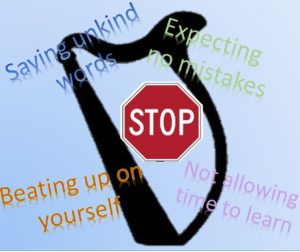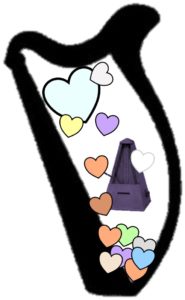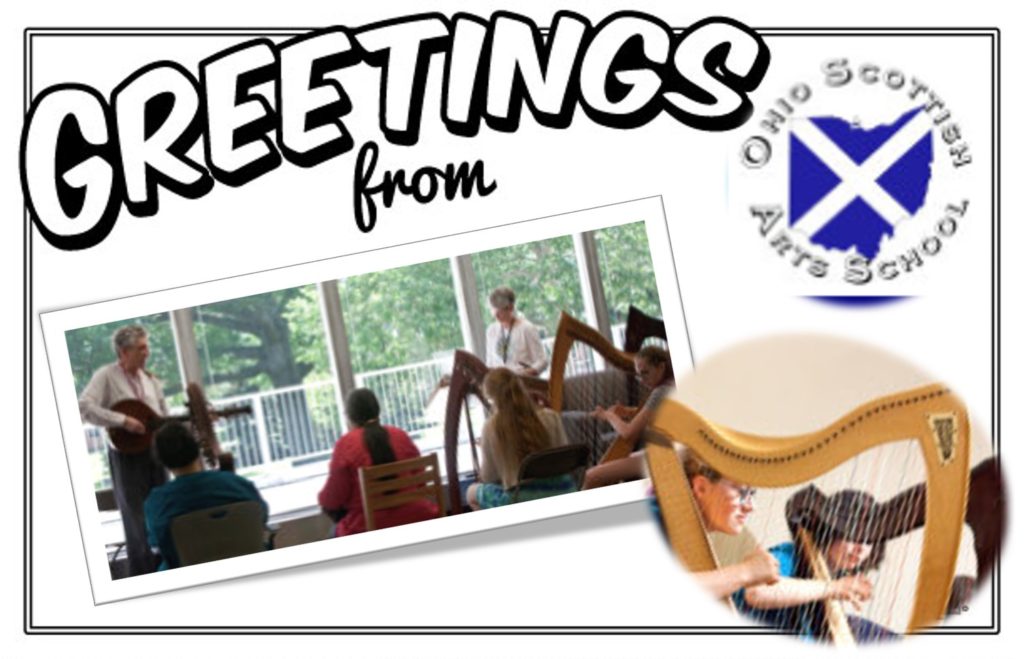Ok, really I did put this together ahead of time so I could completely focus on OSAS. I’ll post updated pictures soon. Until then, a “postcard”!
Month: June 2016
-
Make a move: Tranposing
One of the skills musicians need (for a whole lot of reasons) is the ability to transpose tunes. Transposing is when you move from playing a tune in one key to playing it in another. For instance, If you have learned to play Happy Birthday in the key of D but when you go to the party everyone else is playing it in C – you either have to transpose it or you have to sit out. And who wants to do that? No one, that’s who!
So, it is clear that being able to transpose is fairly important. It is also somewhat intimidating to learn to do it – typically because we wait until we’re at that party to give it a try…and we know that everyone else can hear us either playing in the wrong key or desperately searching for a tune we already know in a key we never even thought to play in!
But, how do we learn to transpose? Well, you already know – we practice! And as usual, I suggest a small steps approach:
- Play the tune in the key you know. Might as well build up a little confidence to get started.
- Next set your levers to the next key down (for instance if you always play a tune in D, with two sharps, you’d move into C with no sharps). Now play the tune just one string down from where you normally play it. This is one of those times you’re going to wish you played without looking, because almost every time you make a mistake it will be because your eyes are getting in the way.
- I also suggest you just worry about getting the melody. Give yourself a break and just get the tune down first. Add the left hand later.
- PRACTICE doing this – at first, focus on a single tune. Work on playing it on the new key. Eventually transpose the left hand too (same thing, move down one, be gentle with yourself).
- Once you’re comfortable in the new key, work on moving back and forth between the two (yes, this is a little kludgy, but it works to get you confident and solid on both keys!).
Once you feel comfortable going between these two keys, you can practice transposing all the tunes you know (well, you know that might be a little bit of hyperbole – but practicing will make it easier and you will get better at it). Then you can also move to bigger jumps (for instance moving from G to D) which will strain your brain a little but will be easier if you have practiced the smaller moves.
So, keep practicing your transposing and soon it will be so second nature you can do it on the fly at all the birthday parties!
-
Who you talking to?
So, there we sat, a fledgling harper and I, having lunch. She’s had a number of distractors in her life, all of them good and important (children, health, work…you know, life!) and therefore has not had as much time for the harp as she probably envisioned when she took it up.
Our conversation was peppered with her self-assessments of her ability to play and included words like:
- Stink
- Bad
- Terrible
- No talent
- Never going to get better
 And others that were not as polite. We laughed about it, but why? What a bunch of hooey for one thing – we all know that we need constant, gentle pressure to form into the musical diamonds we wish to be – if that heat and pressure don’t happen, we don’t transform!
And others that were not as polite. We laughed about it, but why? What a bunch of hooey for one thing – we all know that we need constant, gentle pressure to form into the musical diamonds we wish to be – if that heat and pressure don’t happen, we don’t transform!But more importantly, who would ever say something like that to someone?!?! It is not only mean, it is demeaning. It is also impolite (and we can all do with more politeness!)
Stop it! Just lay off! When you hear yourself begin to pick on you, stand up to your inner bully – you wouldn’t allow someone to pick on your children, so you need to be sure that you don’t allow you to pick on you!!
When you hear the litany begin you can do one or all of the following to stop that negative self-talk and get back to focusing on your practice:
- Ask yourself if what you said is really true? Or is it just a habit? You know it’s not true, but you might have conditioned yourself to go along with it.
- Ask yourself if you are being realistic? Could anyone learn an entire concerto, memorize it and play it to perfection after the first run through? Nope, so knock it off!
- I like variations on, “If you wouldn’t say it to a child/your mother/your best friend, then stop”
Instead, ask yourself how your favorite Harp Hero, mentor or teacher would handle the situation? Would they berate you, call you names and grimace? Not if they are good teachers! They’d say something gentle, thoughtful, caring and supportive – do that instead!
-
I’m having an affair with Seth!
It started when I was 12. My parents introduced us. Seth and I had a rocky relationship for a long time. I was convinced that he hated me and I never really respected him. I let him stew, alone, for years.
But recently, I developed a begrudging respect for him. And lately, that has blossomed into a raging love affair. I have learned to love him – Seth Thomas, my metronome!
 I had noticed that as much as I tried to ignore it, and as often as I played it, there was a tune (ok, really a set of tunes) that were just random at best. They gained momentum every time I played, and no amount of toe tapping, counting aloud, or getting dark looks from those around me seemed to help. In addition, I could never play them cleanly – there was always a mistake somewhere. And some of those mistakes were not random. Further, I love the tunes, so I really wanted to clean them up.
I had noticed that as much as I tried to ignore it, and as often as I played it, there was a tune (ok, really a set of tunes) that were just random at best. They gained momentum every time I played, and no amount of toe tapping, counting aloud, or getting dark looks from those around me seemed to help. In addition, I could never play them cleanly – there was always a mistake somewhere. And some of those mistakes were not random. Further, I love the tunes, so I really wanted to clean them up.Enter Seth. Now, these are reels mind you. I set Seth on the bench next to me and selected 64…for the and! Yes, that meant the tempo was 32. If you’re one of my students it has now dawned on you that this is not just something I made up to torture you – I actually made it up to torture myself! At that speed I noticed all kinds of things. First the tune totally fell apart, so I had to rebuild the tune so I could remember what came next, not just let it happen. Also, my fingers and hands were tense and not ready for what was coming. Finally, because I had played it below standard so many times, my posture was hunched while I waited for everything to come apart.
Now, Seth sits by me, stoically, working with me (although sometimes it still feels like its against me!) to help me do the work to make the tune come out of the harp the way I hear it in my head. We’re taking it slow, me and Seth, and building a future together. I’m so glad to have Seth in my studio – it must be love!
-
Do you make your practicing harder than it needs to be?
I’m not a neat freak. In fact, I’m not very neat at all. I sort of thrive on a little bit of a mess. But I have a very selective mess – I have sheet music piled everywhere, and music books mixed with reading books.
 But I also have a lot of bright lighting and a wide clear space for my harps, nothing on my benches and typically pencils and pens on the stand shelf. It is my kind of organized – I have what I need where I need it when I reach for it – and when I reach, I don’t knock over piles of stuff!
But I also have a lot of bright lighting and a wide clear space for my harps, nothing on my benches and typically pencils and pens on the stand shelf. It is my kind of organized – I have what I need where I need it when I reach for it – and when I reach, I don’t knock over piles of stuff!How about you? What does your practice space look like? Have you made yourself a space in which to work or is your harp stuck in a corner? Can you sit and play or do you have to move a lot of things (furniture, books, shoes, etc.) to get to it so you can do your work?
This might seem silly but actually, your workspace is important. You will not practice if you can’t get to the most important tools you need – your harp, your bench, your music! You might think you will move things out of the way and get your harp out each and every time you want to practice. And perhaps you will, sometimes. But few people are consistent in digging something out to use it and you are unlikely to be consistent.
So, if you are not practicing as well, as consistently, or as regularly as you think you should, take a good hard look at the location of your practice space, your harp, and the tools of your work. Make any changes that will reduce the amount of fiddling around you have to do to get to practicing and see if you gain some consistency and improved practice! Don’t put your baby in a corner – and don’t make your practicing harder than it needs to be!

